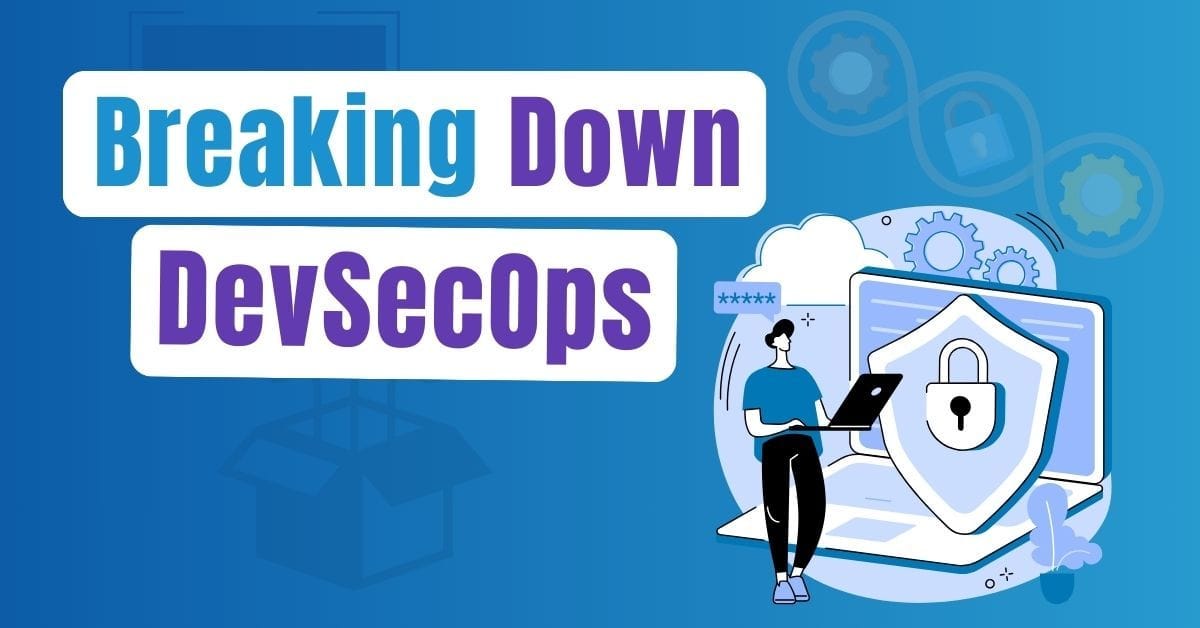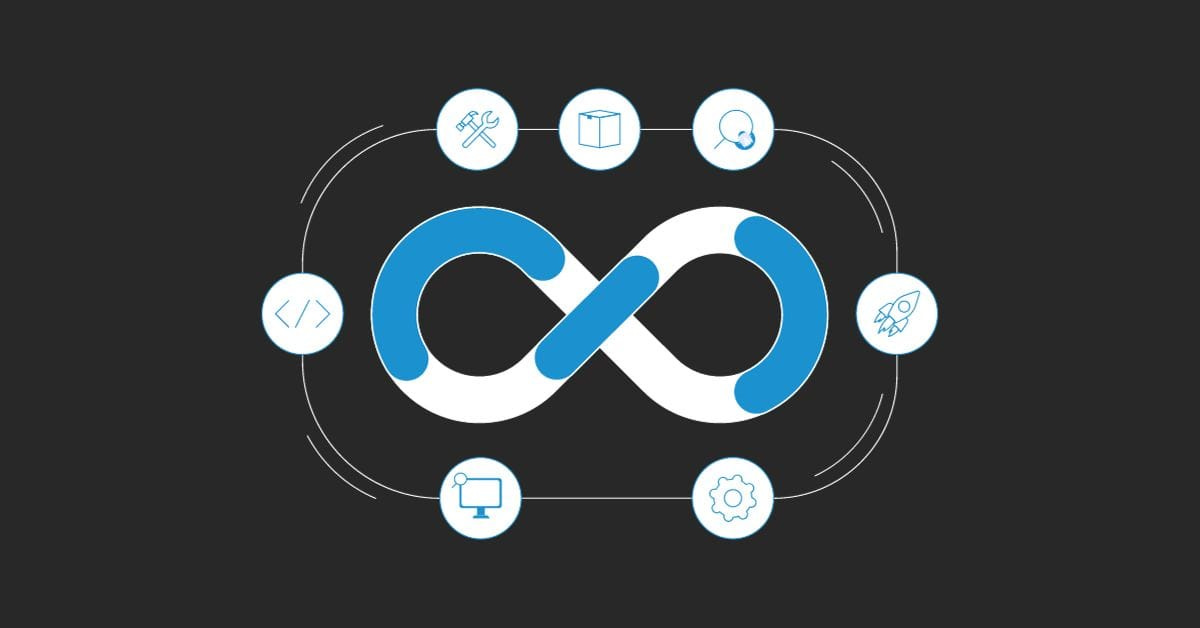Breaking Down DevSecOps: What It Means for Modern Development
DevSecOps stitches security into the DevOps process, aiming to build software that's as secure as it is functional, right from the first line of code. It's a shift in mindset: instead of bolting on security features at the end, DevSecOps weaves them into every stage, making sure that the fast pace of development doesn't leave vulnerabilities in its wake.
For developers, this means adjusting workflows to include security checks and balances from the get-go. For security teams, it's about engaging earlier in the development cycle. And for the business, it translates to delivering products that customers can trust, without sacrificing speed. The goal here is clear—create a process where security and development aren't at odds but are part of the same team, driving towards the same finish line. This article will walk you through what DevSecOps looks like in the day-to-day of modern software development, and how to implement it properly.
What is DevSecOps?
DevSecOps is the fusion of development, security, and operations into a unified approach to software development. It's a direct response to the challenges posed by traditional software development practices where security was often an afterthought, leading to costly and time-consuming fixes late in the software release cycle.
The "Sec" in DevSecOps is what sets it apart. It's about introducing security early in the software development lifecycle and keeping it there—through every update, every iteration, every release.
This approach doesn't just apply to the code but to everything: from the people involved in the process to the tools they use, and the culture that surrounds them. DevSecOps calls for automated security checks, where possible, to keep pace with continuous integration and deployment. It promotes collaboration between teams that might once have worked separately, encouraging a shared responsibility for security.
In practice, implementing DevSecOps means that every developer becomes a security team member, and every security team member gets involved in the development process. It's a collaborative effort that seeks to ensure that the final product is as free from vulnerabilities as possible without hindering the development speed.
The Benefits of DevSecOps
Adopting a DevSecOps model brings several tangible benefits to both the development process and the final software product. Let's break down the core advantages:
Enhanced Security Posture
By integrating security practices throughout the development cycle, potential vulnerabilities are identified and remediated early. This proactive stance significantly reduces the risk of security incidents post-deployment.
Speed and Efficiency
Security checks and tests that are automated and integrated into the CI/CD pipeline help maintain the pace of development without compromising security. This means security becomes a part of the development, not an obstacle to it.
Cost-Effectiveness
Catching security issues early is far less costly than fixing them after a product has been deployed. Early detection helps avoid the expenses associated with downtime, data breaches, and compliance penalties.
Compliance Management
With regulations becoming stricter, DevSecOps helps ensure that compliance is baked into the product by default, easing the compliance burden and reducing the risk of non-compliance.
Improved Collaboration
DevSecOps encourages a culture of open communication between development, operations, and security teams, fostering better teamwork and more efficient problem-solving.
Higher Product Quality
Secure design and architecture from the outset lead to a more reliable and robust software product, increasing customer trust and satisfaction.
Continuous Improvement
The iterative nature of DevSecOps, with ongoing testing and feedback loops, means that security is continuously improved upon—a crucial factor in the ever-evolving threat landscape.
Key Principles of DevSecOps
The shift to DevSecOps revolves around several core principles that guide its practices and methodologies. These principles are designed to embed security into the development lifecycle seamlessly. Here’s an overview of the main ones:
Automation: Automation is the heartbeat of DevSecOps. From code scanning to compliance monitoring, automating security tasks ensures they are performed consistently and without human error. It allows for frequent and regular security assessments without slowing down the development process.
Security as a Priority: In DevSecOps, security is not an add-on but a priority from the start. Security requirements are considered as fundamental as functional requirements. This security-first mindset ensures that every feature, every line of code, is evaluated for potential risks.
Continuous Integration/Continuous Deployment (CI/CD): DevSecOps thrives on CI/CD practices, which allow for the rapid integration of code changes into a central repository, followed by automated deployment. This ensures that security updates and patches are delivered quickly and frequently, minimizing the window of vulnerability that could be exploited by attackers.
By adhering to these principles, organizations can create a DevSecOps culture where security is a shared responsibility and an essential part of the development and deployment process.
Implementing DevSecOps: A Step-by-Step Approach
Implementing DevSecOps can seem daunting, but with a strategic approach and the right tools, it can be streamlined effectively. Here's a high-level roadmap to guide you through the process:
1. Assess Current Practices
Start with a comprehensive audit of your existing development, operations, and security practices. Identify areas where security can be integrated and plan for the necessary tools and training that will be needed.
2. Cultivate a Collaborative Culture
Foster a culture where security, development, and operations teams collaborate closely. This often involves cross-training and using shared tools and processes. For example, tools like Codegiant, Jira, and Asana are good for collaborating, planning, and tracking issues across teams.
3. Integrate the right tools and automate security processes
Select and integrate tools that support automation for continuous integration, continuous deployment, and security. Codegiant can also be instrumental in this phase, providing a suite of tools that facilitate automated code and image scanning, vulnerability detection, and compliance monitoring.
4. Incorporate Continuous Monitoring
Implement monitoring tools to continuously scan for and alert on security issues in production environments.
5. Develop Incident Response Plans
Develop an incident response plan that allows for quick reaction to security issues. This plan should be regularly updated and practiced.
6. Feedback Loops
Establish feedback mechanisms to ensure continuous learning and improvement. This includes post-incident reviews and sharing lessons learned across teams.
7. Measure and Improve
To gauge the effectiveness of your DevSecOps initiatives, metrics are crucial. Use application performance management (APM) tools like New Relic, Datadog, or Codegiant’s APM features to track performance metrics and KPIs that reflect your security posture. Codegiant’s integrated error and APM tracing, along with real-time notifications, make it a robust option for monitoring and improving application performance.
Remember, implementing DevSecOps is not a one-time project but a continual process of improvement and adaptation. DevSecOps is dynamic, and as your organization grows and adapts, so should your security practices.
Conclusion
DevSecOps is critical for modern software development. By Integrating security from the start, developers can build safer applications more efficiently.
While Codegiant offers a solid platform with integrated tools that facilitate this approach, remember that the effectiveness of DevSecOps relies on how well a team adopts and implements these practices. It's not only about the tools you use but also about the commitment to a process that prioritizes security at every step.
Choose tools that fit seamlessly into your workflow and focus on fostering a team culture that values proactive security measures. This commitment is what will ultimately define the success of your DevSecOps initiatives.
If you learnt from this article, share your thoughts in the comments. And if you want to read more articles like this, consider hitting the "Subscribe" button on the bottom-right. Stay Curious, Keep Building!





